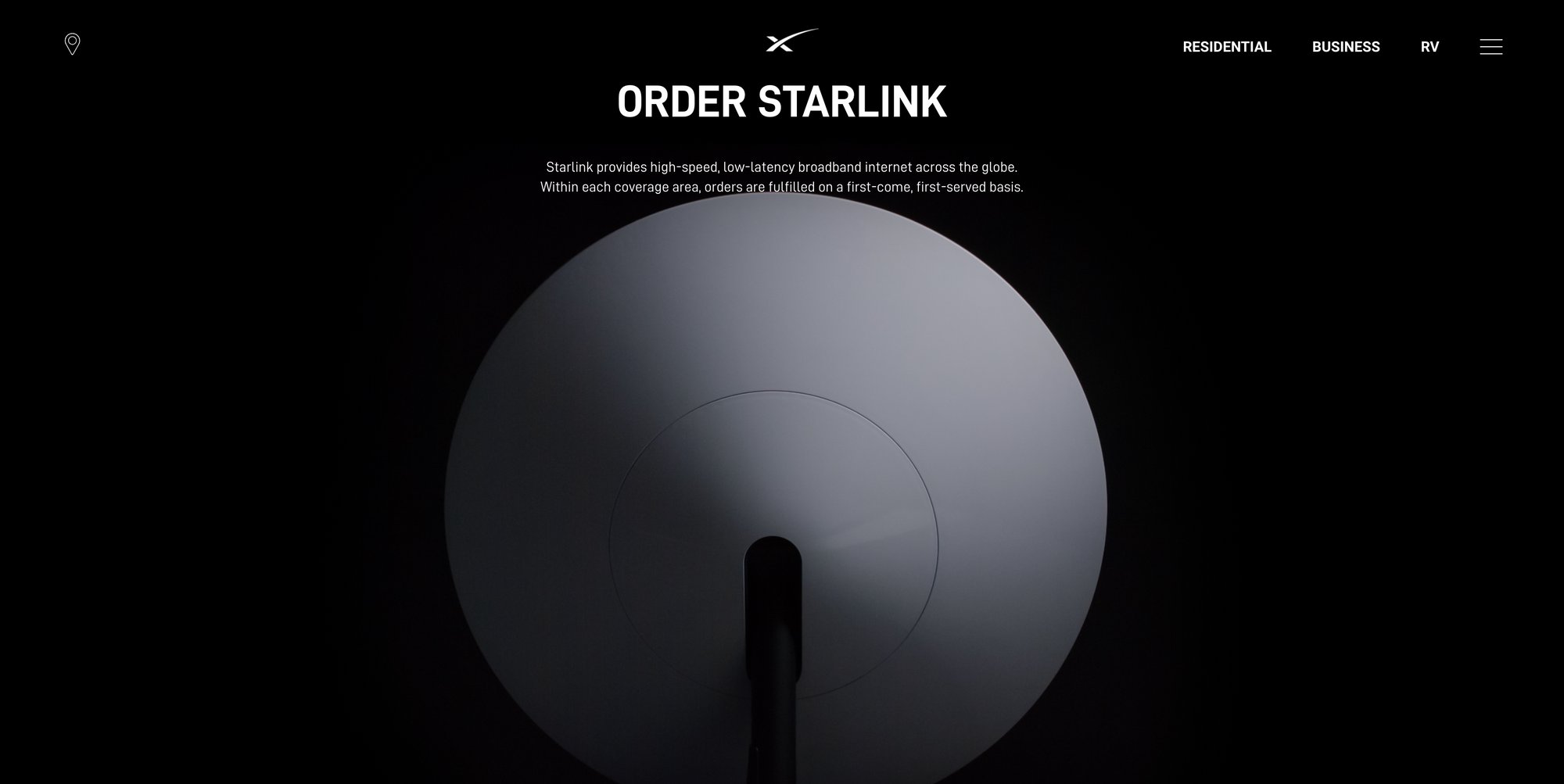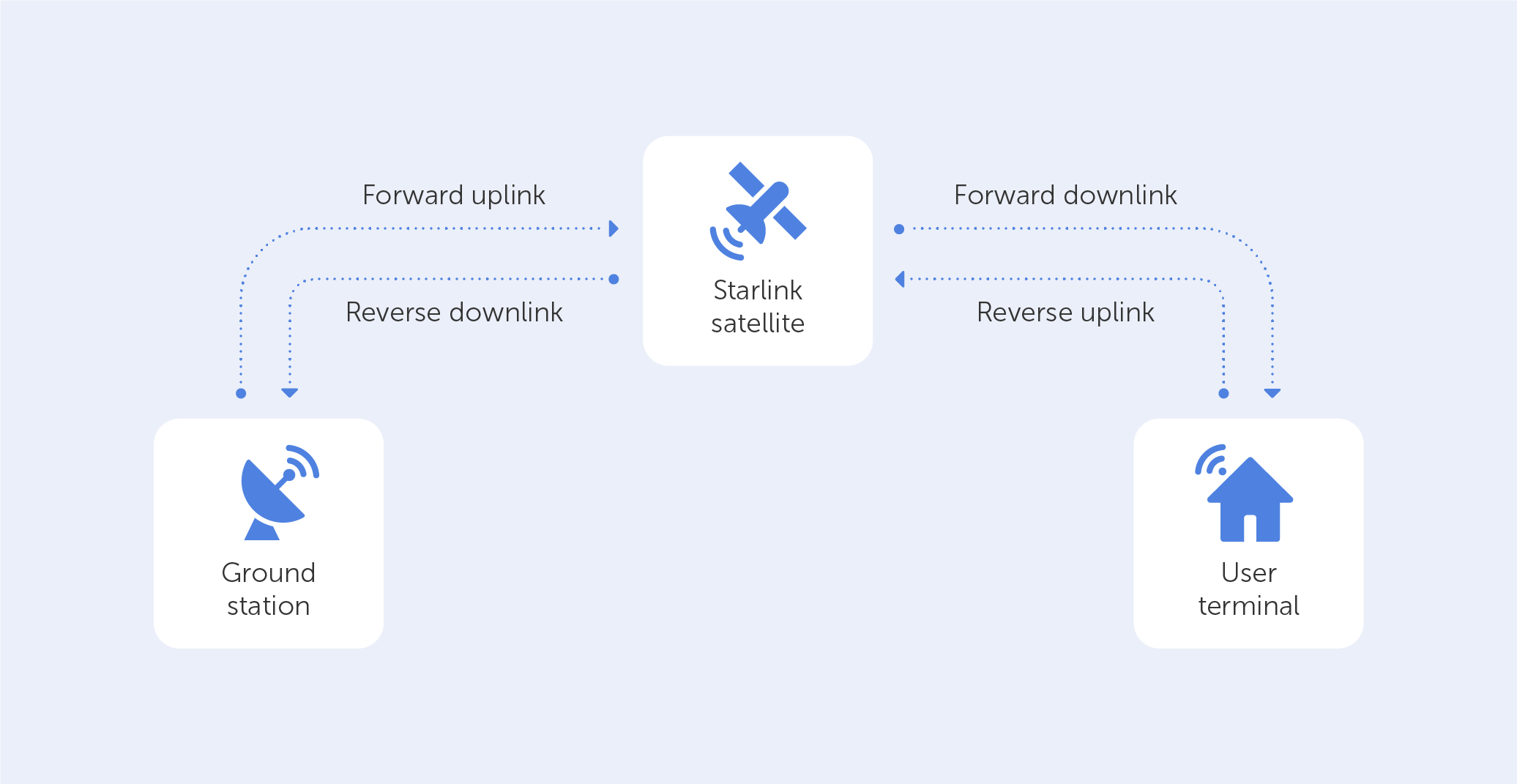How secure is Elon Musk’s Starlink?
If you still haven’t heard about Starlink, you’ve definitely heard about its creator — Elon Musk.

Elon Musk is a billionaire entrepreneur most famous for his electric vehicle firm, Tesla, and his space exploration company, Space X. Maybe you learned about him from our news headlines talking about his attempts to acquire Twitter or his past endeavors stirring up trouble on social media. Perhaps you only know him as one of the world's wealthiest people. Starlink is the less known facet of Elon Musk’s career that is focused on providing internet to every part of the world including hard-to-reach places, and that’s what we’re going to be talking about today.
What is Starlink, exactly?
Starlink is the name of the global and constantly growing network of orbital satellites overhead, based on SpaceX technologies. This project began in 2015, and the first prototype satellites were sent into orbit in 2018. In January 2021, after three years of development and successful launches, Starlink reached 1,000 satellites. Over the course of the next year, this number doubled. Now, Starlink has more than 2,000 operational satellites orbiting the Earth. Indeed, it’s still just the beginning. The plan will be completed as soon as the network covers most parts of the Earth’s surface. To do this, Starlink requires about 12,000 satellites in orbit.

Currently, the project’s creators are assuring the provision of its service in 32 countries. This number will increase every year. However, the budding broadband provider still has a backlog of prospective customers waiting to receive equipment and connect to the system.
How fast is Starlink?
Starlink offers high-speed broadband internet, the spread of which, according to the speed-tracking website Ookla, is above 100mbps in more than 15 different regions. When we’re talking about the United States, Starlink offers average download speeds of around 105Mbps and upload speeds of around 120Mbps, which is about five or six times faster than their satellite rivals. Elon Musk is focused on doubling the average internet speed and reaching 300 Mbps. In any case, even now, we can observe his success as the Starlink Internet system really is one of the fastest in the world.
How much does it cost?
The initial cost of the service was $99 per month, and the initial one-time payment for the satellite dish and router was $499. As Starlink is focused on the availability of the internet, it was announced that the cost of the service is going to decline in a few years. But, in March of 2022, the company announced a price increase. So now, the monthly payment is $110 and the initial payment for the equipment is $599. This price is quite high for satellite Internet, but the creators of Starlink bet on the wide coverage of their network and its availability in hard-to-get places.
As the president of SpaceX said last year, Starlink aimed to keep pricing as straightforward and transparent as possible, and that there were no plans to add more levels to the service. However, in 2022, a new premium level with a scanning array twice as large as the normal plan and download speeds ranging from 150 to 500Mbps appears to be modifying that strategy. This option costs $500 per month, and the initial payment for equipment will be $2,500. Now the company is taking orders for that tier, with the service set to arrive later in 2022.
The pros and cons of Starlink Internet
Starlink, like any other modern technology, has some benefits and drawbacks. Let's take a quick look at them.
The pros of Starlink:
1. Faster Internet. The internet offered by SpaceX is definitely faster than traditional satellite Internet. Starlink is so quick that it's almost impossible to compare it to traditional satellite connections.
2. Relatively cheap. Starlink's internet service is reasonably priced. In rural and suburban locations, it is less expensive than cable and satellite internet. Suburban consumers pay the same price as city residents in many areas, but they get much slower internet.
3. Wide availability. Regardless of your location, Starlink is available to every customer. It has wide network coverage and provides fast, unlimited Internet from Antarctica to the middle of the ocean.
4. Faster disaster recovery. Storms, tornadoes, wildfires, and floods can all cause internet cable to be seriously damaged. After any type of disaster, the recovery of the cable Internet takes quite a lot of time. The process of fixing it isn’t just costly but also time-consuming, unlike Starlink. The Internet will be available straight away after the disaster.
The cons of Starlink:
1. Hardware installation. For many users, hardware installation could become a problem as the creators of Starlink don’t provide the installation of the equipment needed for using their network. Thus, customers have to install the equipment themselves or hire professionals to spend extra money.
2. It’s not portable. When compared to cellular internet, Starlink is not as portable. We can use our phones to access the internet from any place. The Starlink dish is not at all portable. Though the dish can be installed above an RV or a boat, unfortunately, it is not small enough to be carried easily.
3. Service disruptions depend on the weather. It's common for satellite service to be disrupted by rain, storms, or solar flares. However, this isn't a major pro for cable internet either; it’s also subject to this type of disruption.
As the number of Starlink’s users increases, the question of the security of this Internet connection has become acute. People want to make sure that the provider that they use is safe enough and that nothing threatens their personal data.
So, is Starlink secure?
The main problem of satellite Internet is that some of the information carried by satellites can be intercepted as it is translated to and from the Earth. Some of that data can also be changed before it reaches its intended destination. This does not, however, necessitate the use of specialized equipment. According to a recent study, this could be accomplished with $300 worth of equipment. It's vital to keep in mind that this issue does not affect all traffic. If you're using an encrypted connection, this form of assault is likely to be unsuccessful. However, it does underline the reality that as satellite internet becomes more ubiquitous, cybercriminals will have additional chances.
Conclusion
Starlink is a quickly growing and highly available technology that is just at the start of its development. However, it already could demonstrate great advantages over the cable network. Like any modern technology, it has several disadvantages, such as weather dependence and the risks related to satellite networks. Now, SpaceX promises a very high level of service with wide coverage, but as practice shows, not all of their promises are worth trusting. If you’re going to get the Starlink dish, you have to consider this issue deeper to make sure that you’re making the right choice.

